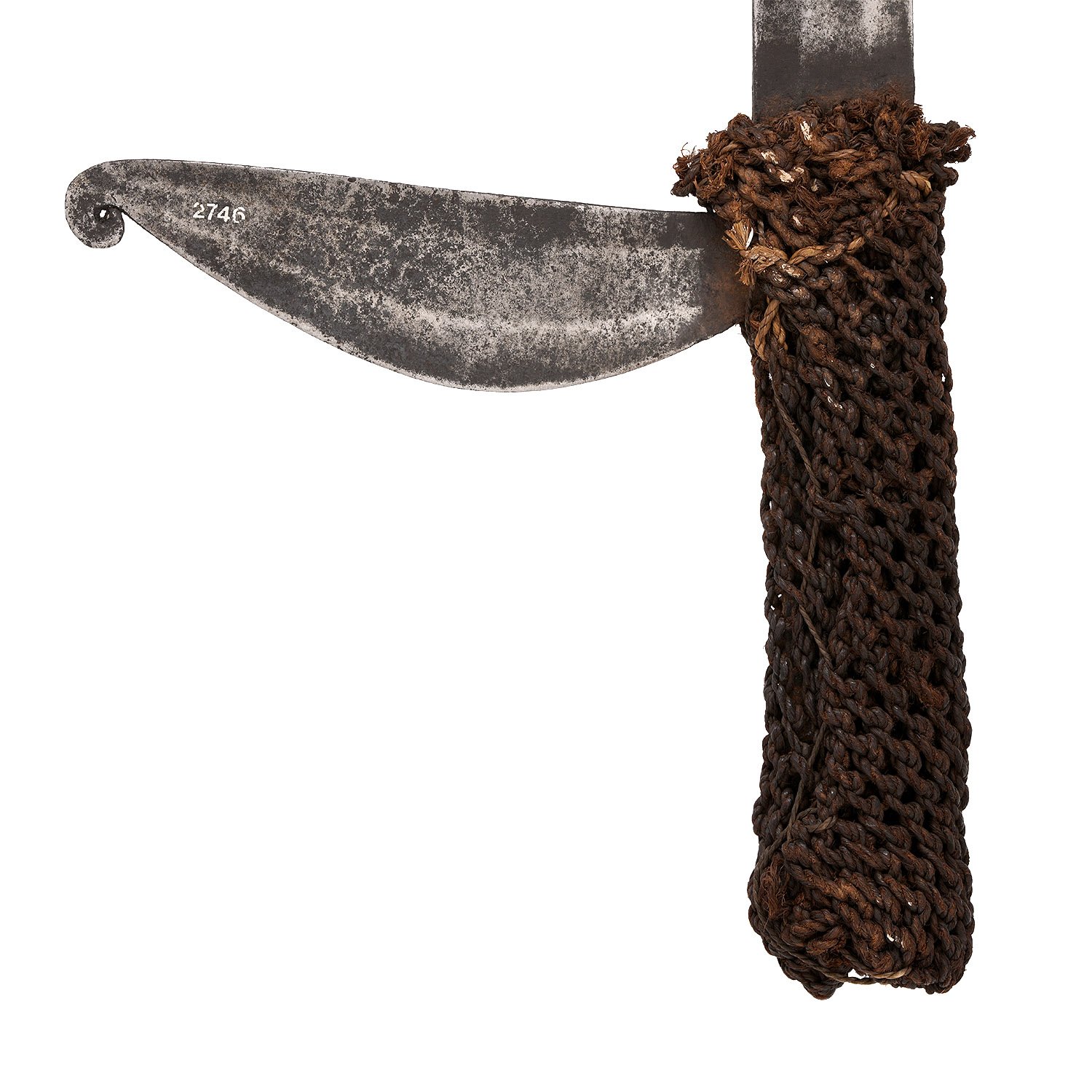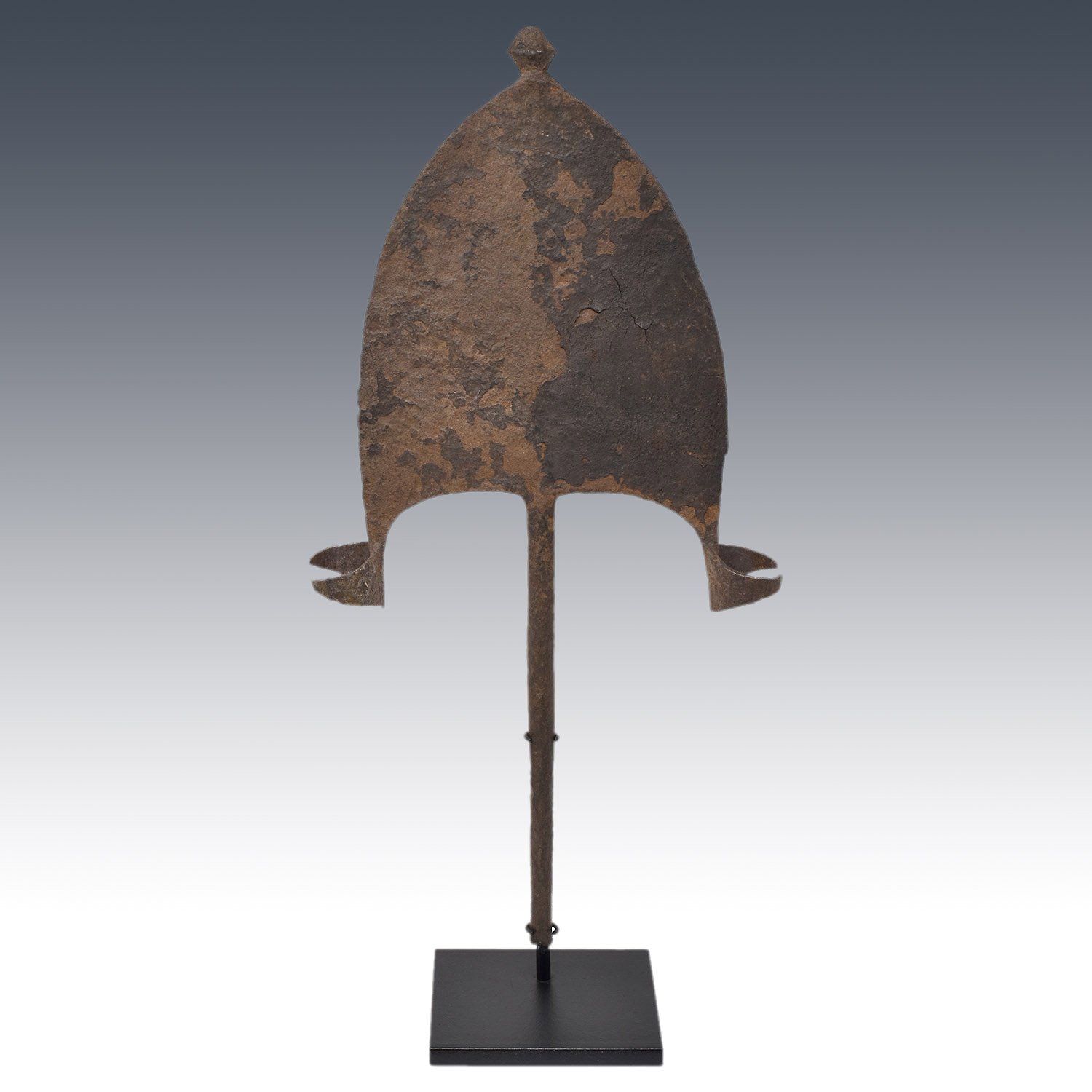Throwing Knife, "Bwambwa" or "Ngwolo"







Throwing Knife, "Bwambwa" or "Ngwolo"
Ngombe, D.R. Congo
Iron, vegetal fiber (grip is an indigenous replacement from the 1950s)
Early 20th century
Dimensions: 14.75 h x 15 w in./ 37.5 h x 38 w cm
Dimensions on stand: 16 h x 15 w x 3.5 d in./ 40.5 h x 38 w x 9 d cm
Provenance: Luc Lefebvre, France; Jacques Billen, Brussels; Pier Giorgio Cerrini, Brussels (his inventory number is on the back of the spur).
This throwing knife design was invented by the Ngbaka but adopted and widely used by the Ngombe. The Ngbaka spoke of how their cultural hero, Seto, carried one, and referred to this type as the "wife" of another of their blades, the za sali, who was the husband.
Ngbaka throwing knives took an expert blacksmith several days to produce, and were expensive. While they could be effectively thrown as weapons, their value made such an act impractical; Westerdijk writes, "its owner hurled it only in the last resort, or when he esteemed to have a fair chance of recovering it." As such, this weapon's primary role was that of an emblem of power, wealth, and prestige. Known as ngwolo or bwambwa, this blade type was mainly carried by village heads, lineage elders, and other notables as a symbol of prestige. They were brandished during important funerals, used in initiation ceremonies, and even carried by police during the colonial period (Westerdijk, The African Throwing Knife, 1988).
Domestic shipping included. International shipping quoted separately.









